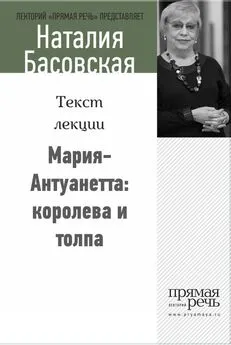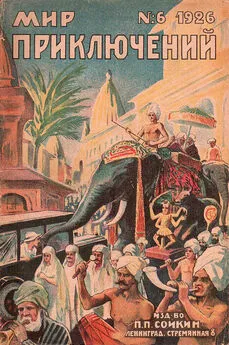Говард Рейнгольд - Умная толпа
- Название:Умная толпа
- Автор:
- Жанр:
- Издательство:ФАИР-ПРЕСС
- Год:2006
- Город:Москва
- ISBN:5-8183-1004-3
- Рейтинг:
- Избранное:Добавить в избранное
-
Отзывы:
-
Ваша оценка:
Говард Рейнгольд - Умная толпа краткое содержание
Мобильная связь и повсеместная компьютеризация уже начинают менять способы общения, трудовой и творческой деятельности, торговли, управления. Информационные технологии и их многообразное воздействие на различные сферы жизни общества — такова тема книги, предлагаемой вниманию читателей. Через десять лет, утверждает автор на основании многочисленных исследований, наблюдений и интервью, основные места средоточия населения Земли будут наводнены микросхемами, способными общаться друг с другом. Люди, оснащенные такими устройствами, составят «умные толпы», и их общение обретет невиданные прежде формы и возможности.
Для широкого круга читателей.
Умная толпа - читать онлайн бесплатно полную версию (весь текст целиком)
Интервал:
Закладка:
3. Joel Garreau, «You Are So Here», Washington Post, 19 August 2001: COl, « http://www.washingtonpost.com/wp-dyn/articles/A33379-2001Augl9.html » (22 January 2002).
4. «Sensor Networks for Healthcare, the Environment, and Homeland Defense», « http://www.soe.ucsd.edu/Research_Review/agenda.html » (1 January 2002).
5. Saikat Chatterjee, «Netravali Sees a Networked Sphere in Ten Years», Business Times, The Times of India, New Delhi, 9 June 2000.
6. M. Weiser, R. Gold, and J. S. Brown, «The Origins of Ubiquitous Computing Research at PARC in the Late 1980s», IBM Systems Journal 38, 4 (1999): 693-696, « http://www.research.ibm.com/journal/sj/384/ weiser.html » (2 February 2002).
7. Mark Weiser, «Ubiquitous Computing», « http://www.ubiq.com/ hypertext/weiser/UbiHome.html » (29 January 2002).
8. Weiser, «The Computer for the 21st Century».
9. «The Trojan Room Coffee Machine», « http://www.cl.cam.ac.uk/ coffee/eoffee.html » (22 January 2002).
10. Weiser, «The Computer for the 21st Century».
11. Howard Rheingold, Virtual Reality (New York: Summit, 1991).
12. Myron Krueger, Artificial Reality (Reading, Mass.: Addison-Wesley, 1983).
13. Myron Krueger, «Responsive Environments», NCC Proceedings, 1977, 422-433.
14. Warren Robinett, «Electronic Expansion of Human Perception», Whole Earth Review, Fall 1991, 16-21.
15. Alex Pentland, «The Dance of Bits and Atoms», « http://www.white.media.mit.edu/people/sandy/profile.html » (2 February 2002).
16. Ivan E. Sutherland, «The Ultimate Display», Proceedings of 1FIPS Congress, 2 May 1965, 506-508.
17. Alex P. Pentland, «Smart Rooms», Scientific American 274 (April 1996): 68-76, « http://www.sciam.com/0496issue/0496pentland.html » (11 December 2001).
18. Elisa Batista, «Big Blue's Big Brother Lab», Wired News, 24 April 2001, « http://www.wired.eom/news/technology/0,1282,43186,00.htrnl » (24 February 2002).
19. J. C. Spohrer, «Information in Places», IBM Systems Journal 38, 4 (1996), « http://www.research.ibm.com/jouraal/sj/384/spohrer.html » (24 November 2001).
20. Ivan E. Sutherland, «Sketchpad: A Man-Machine Graphical Communication System», Proceedings of the Spring Joint Computer Conference, Detroit, Michigan, May 1963, and MIT Lincoln Laboratory Technical Report #296, January 1963.
21. Ivan E. Sutherland, «A Head-Mounted Three-Dimensional Display», AFIPS Conference Proceedings 33, Part I, 1968, 757-764.
22. S. Feiner, B. Maclntyre, and D. Seligmann, «Knowledge-Based Augmented Reality», Communications of the ACM 36 (July 1993): 52-62.
23. Spohrer, «Information in Places».
24. Per Persson and Fredrik Espinoza, «GeoNotes: Social Enhancement of Physical Space», ERCIM News 47, October 2001, « http://www.ercim.org/ publication/Ercirn_News/enw47/persson.html » (2 February 2002).
25. Jun Rekimoto, Yuji Ayatsuka, and Kazutera Hayashi, «Augment-able Reality: Situated Communication through Physical and Digital Spaces», Proceedings of the International Symposium on Wearable Computing, 1998, « http://www.csl.sony.co.jp/person/rekimoto/papers/ iswc98.pdf » (22 December 2001).
26. Ismail Haritaoglu, «InfoScope: Link from Real World to Digital Information Space», in Ubicomp 2001: Ubiquitous Computing. Third International Conference, Atlanta, Georgia, September 30-October 2, 2001: Proceedings, ed. Gregory С Abowd, Barry Bromitt, and Steven A. Shafer, 247-255. Lecture Notes in Computer Science, 2201, Springer 2001, « http:// link.springer.de/link/service/series/0558/papers/2201/22010247.pdf »
27. Salil Pradhan et al, «Websigns: Hyperlinking Physical Locations to the Web», IEEE Computer 34 (August 2001): 42-46.
28. Steven Feiner et al., «A Touring Machine: Prototyping 3D Mobile Augmented Reality Systems for Exploring the Urban Environment», Proceedings of the First International Symposium on Wearable Computers (1997): 74-81, « http://www.computer.org/conferen/proceed/8192/ pdf/81920074.pdf » (5 February 2002).
29. Scott Fisher, «Environmental Media: Linking Virtual Environments to the Physical World», Proceedings of the Second International Symposium on Mixed Reality, Yokohama, Japan, March 2001, « http:// www.wem.sfc.keio.ac.jp/wern/RawMedia/Fisher.pdf » (3 February 2002).
30. David S. Bennahum, «Be Here Now», Wired 9.11, November 2001, « http://www.wired.eom/wired/archive/9.11/location.html » (3 February 2002).
31. Garreau, «You Are So Here».
32. «Direction Finding CDMA Handset from KDDI», 27 February 2002, « http://www.cellular-news.com/story/5932.shtml » (6 March 2002).
33. Universal Design of Digital City Project Overview, «http// www.digitalcity.jst.go.jp/about-e.html » (3 February 2002).
34. Risto Linturi, Marja-Riitta Koivunen, and Jari Sulkanen, «Helsinki Arena 2000-Augmenting a Real City to a Virtual One», Digital Cities 2000 83-96, « http://www.linturi.fi/HelsinkiArena2000/ » (11 January 2001).
35. The Center for Information Technology Research in the Interest of Society (CITRIS), « http://www.citris.berkeley.edu/about_citris.html » (3 February 2002).
36. Wade Roush, «Networking the Infrastructure», Technology Review, December 2001, « http://www.technologyreview.com/articles/roushl201.asp » (11 December 2001).
37. Russ Adams, «Bar Code History Page», BarCode 1, 16 (March 2001), « http://www.adamsl.com/pub/rassadam/history.html » (3 February 2002); See also: «The Origins of a Bar Code», Uniform Code Council, 2002, « http://www.uc-council.org/about_ucc/uc_bar_code_origin.html » (11 January 2002).
38. Charlie Schmidt, «Beyond the Bar Code», Technology Review, March 2001, « http://www.technologyreview.com/articles/schmidt0301. asp » (6 January 2002).
39. Barpoint, « http://www.barpoint.com » (3 February 2002).
40. «Organic Transistors and the Death of the Bar Code», Berkeley Engineering Lab Votes 2 (February — March 2002), « http://www.coe.berkeley.edu/labnotes/0202/barcode.html » (29 March 2002).
41. Auto-ID Center, « http://www.autoidcenter.org/main.asp » (29 March 2002).
42. Junko Yoshida, «Euro Bank Notes to Embed RFID Chips by 2005», ЕЕ Times, 19 December 2001, « http://www.eet.com/story/OEG20011219S0016 » (29 January 2002).
43. Wes Vernon, «Latest Privacy Nightmare: Money That Tracks You», NewsMax.com , 28 July 2001, « http://www.newsmax.com/archives/articles /2001/7/27/212324.shtml » (3 February 2002).
44. Will Knight, «Tiny Radio Chip Gives Paper an ID», New Scientist, 4 July 2001, « http://www.newscientist.com/news/news.jsp?id=ns9999967 » (3 February 2002); «Hitachi Announces Worlds Smallest RFID 1С, the mu-chip», 5 July 2001, « http://www.hitachi.com/products/electronic/ semiconductorcomponent/elecrfid/ » (5 February 2002).
45. Kris Pister, Joe Kahn, and Bernhard Boser, «Smart Dust: Autonomous Sensing and Communication in a Cubic Millimeter», Berkeley Sensor and Actuator Center, « http://www.-bsac.EECS.Berkeley.EDU/~pister/ SmartDust/ » (2 February 2002).
46. Duncan Graham-Rowe, «Dust Bugs», New Scientist, 28 August 1999, « http://www.-bsac.eecs.berkeley.edu/~warneke/research/press/ newscientist.html » (30 January 2002).
47. Jack Smith, «Computer in a Speck of Dust», ABCNEWS.com , 22 November 1999, « http://www.rense.com/politics5/minitech_p.htm » (3 February 2002).
48. Jun Rekimoto, «NaviCam: A Magnifying Glass Approach to Augmented Reality Systems», Presence: Teleoperators and Virtual Environments 6, 4 (1997): 339-412.
49. Jun Rekimoto, « http://www.csl.sony.co.jp/person/rekimoto.html » (3 February 2002).
50. Neil Gershenfeld, When Things Start to Think (New York: Henry Holt, 1999).
51. William Butera, «Programming a Paintable Computer», (Ph. D. diss, MIT, 2002), « http://web.media.mit.edu/~vmb/papers/buteraphd.pdf » (July 2002).
52. Gershenfeld, When Things Start to Think, 10.
53. Steve Mann and Hal Niedzviecki, Cyborg: Digital Destiny and Human Possibility in the Age of the Wearable Computer (Mississauga: Doubleday Canada, 2001), 30.
54. «A Brief History of Wearable Computing», « http://wearables.www.media.mit.edu/projects/wearables/lizzy/timeliiie.html#1989 » (3 February 2002).
55. J. Peter Bade, G. Q. Maguire Jr., and David F Bantz, The IBM/ Columbia Student Electronic Notebook Project, 29 June 1990.
56. «A Brief History of Wearable Computing».
57. The Wearable Group at Carnegie Mellon, « http://www.wearablegroup.org/ » (6 March 2002). See also: VuMan, « http://www.-2.cs.cmu.edu/~wearable/vuman.html » (6 March 2002).
58. Mann and Niedzviecki, Cyborg, 42.
59. Cyberman, directed by Peter Lynch, « http://cbc.ca/cyberman/ » (29 March 2002).
60. Thad Starrier, «Wearable Computing and Context Awareness» (Ph. D. diss., MIT, 1999), 64.
61. Mann and Niedzviecki, Cyborg, 71.
62. Steve Mann, «Smart Clothing: The Shift to Wearable Computing», Proceedings of CACM 39 (August 1996): 23-24.
63. «The MIThril Vision», « http://www.media.mit.edu/wearables/ mithril/vision.html » (21 January 2002).
64. Scott Stemberger, «New Body Art: Wearable Wireless Devices», IBM DeveloperWorks, January 2002, « http://www.-106.ibm.com/ developerworks/wireless/library/wi-wear.html?t=gr,p=Wearem-Wireless » (3 February 2002).
65. Wearable Internet Appliance, « http://www.hitachi.co.jp/Prod/ vims/wia/eng/main.html » (3 February 2002).
66. «Timex Watch to Incorporate Speedpass Technology», Associated Press, 28 February 2002, « http://www.usatoday.com/life/cyber/tech/ review/2002/2/28/timexspeedpass.htm » (6 March 2002).
Глава 5
1. Epigraph: Bruce Sterling, Distraction, A Novel (New York: Bantam, 1998).
2. Upendra Shardanand and Pattie Maes, «Social Information Filtering-Algorithms for Automating Word of Mouth», Proceedings of ACM CHF95 Conference on Human Factors in Computing Systems, 1995, « http:// www.acm.org/sigchi/chi95/Electronic/documnts/papers/us_bdy.htm » (9 February 2002).
3. Cameron Barrett, «Online Community Technologies and Concepts», Camworld.com , December 2001, « http://www.camworld.com/ essays/communities.html » (9 February 2002).
4. Howard Rheingold, The Virtual Community: Homesteading on the Electronic Frontier (Reading, Mass.: Addison-Wesley, 1993).
5. Howard Rheingold, «Virtual Communities», Whole Earth Review 61 (Winter 1988): 14.
6. David Goldberg et al., «Using Collaborative Filtering to Weave an Information Tapestry», Communications of the ACM 35 (December 1992): 61-70.
7. Usenet FAQ Archive, « ftp://rtfm.mit.edu/pub/usenet-by-hierar-chy/ » (9 February 2002).
8. Paul Resnick et al., «GroupLens: An Open Architecture for Collaborative Filtering of Netnews», Proceedings of ACM 1994 Conference on Computer Supported Cooperative Work, 1994, 175-186, « http:// www.si.umich.edu/~presnick/papers/cscw94/ » (9 February 2002).
9. The Reputations Research Network, « http://databases.si.umich. edu/reputations/ » (14 January 2002).
10. MovieLens, « http://movielens.umn.edu/ » (9 February 2002).
11. Hui Guo, Thomas Kreifelts, and Angi Voss, «SOaP: Social Filtering through Social Agents», report of ECRIM Workshop Proceedings, No. 98/W001 of the 5th DELOS Workshop on Filtering and Collaborative Filtering, 291-298, « http://www.ercim.org/publication/ws-proceedings/ DELOS5/guo.pdf » (10 February 2002).
12. Steven Johnson, Emergence: The Connected Lives of Ants, Brains, Cities, and Software (New York: Scribner, 2001).
13. Epinions, « http://www.epinions.com » (9 February 2002).
14. Mark Frauenfelder, «Revenge of the Know-It-Ails», Wired 8.07, July 2000, « http://www.wired.eom/wired/archive/8.07/egoboo.html » (31 January 2002).
Читать дальшеИнтервал:
Закладка:







